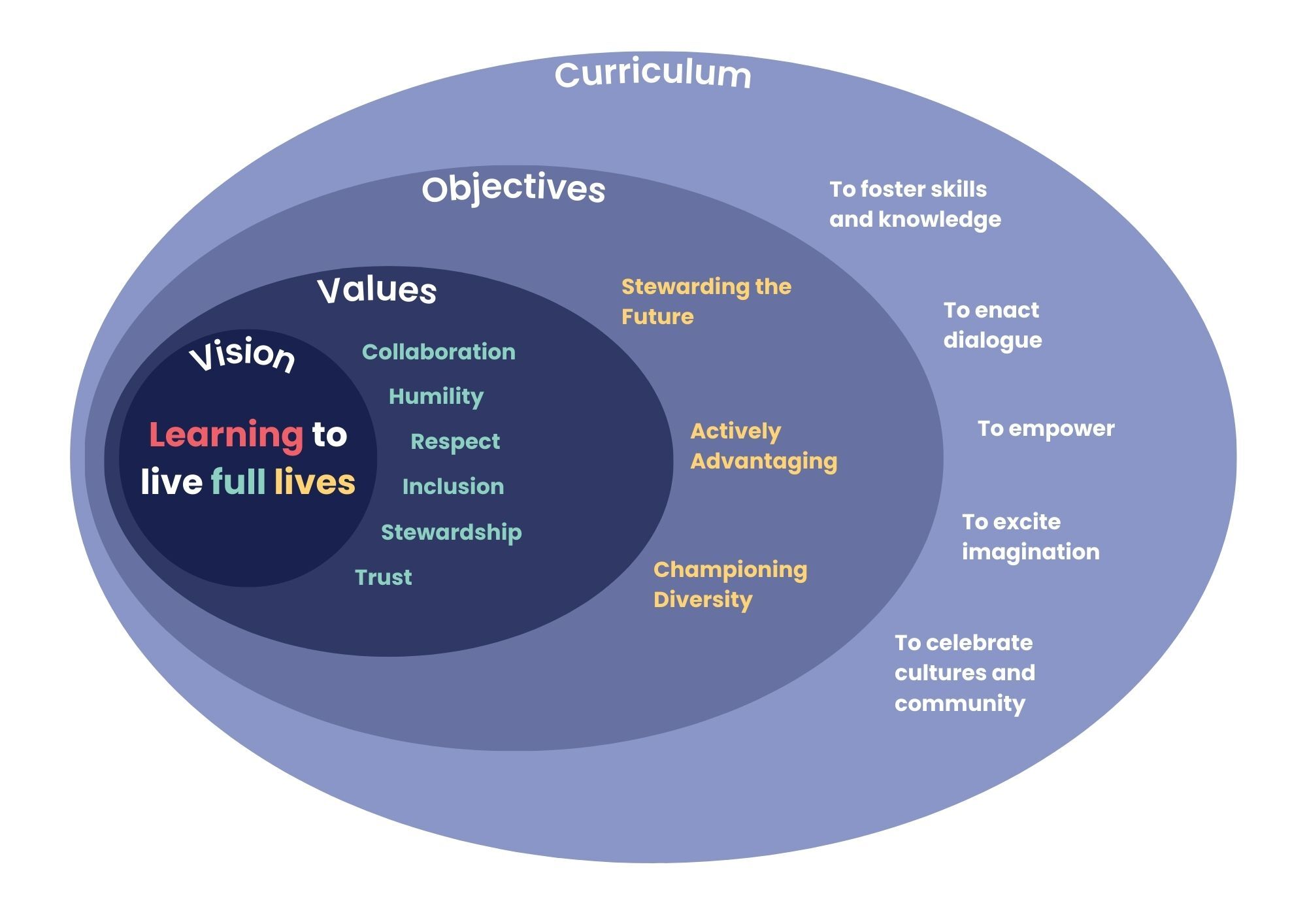- Home
- About Us
- Curriculum Principles
Curriculum Principles
As a Trust we have a set of principles that underpin our curriculum, rooted in the Cambridge Primary Review.
The aims presented by the Cambridge Primary Review (2009) are essential for planning the curriculum, which is the cornerstone of school life. Our curriculum principles demonstrate our commitment to providing the best provision possible for every child in all our Trust schools.

To Empower
To excite, promote and sustain children’s agency, empowering them through knowledge, understanding, skill and personal qualities to profit from their learning, to discover and lead rewarding lives, and to manage life and find new meaning in a changing world.
To Excite Imagination
Securing enthusiastic and active engagement - excite children’s imagination so they can advance their understanding, extend the boundaries of their lives, contemplate worlds possible as well as actual, understand cause and consequence, develop the capacity for empathy, think about and regulate their behaviour, and explore language, ideas and arguments.
To Celebrate Cultures and Communities
Having respect for self, peers and adults, valuing diversity and difference, ideas and values, recognising that ‘Education is a major embodiment of a culture’s way of life, not just a preparation for it'.
To Enact Dialogue
Recognise that dialogue and communication is central to pedagogy: between self and others, between personal and collective knowledge, between present and past, between different ways of thinking.
To Foster Skills and facilitate knowing, understanding and making sense
Foster skill in those domains on which learning, employment and a rewarding life depend: in oracy and literacy, in mathematics, science, IT, the creative and performing arts and financial management; but also communication, creativity, invention, problem-solving, critical practice and human relation
Our schools design their curriculum to go beyond the national curriculum. They ensure a breadth of curriculum coverage which meets the needs of all pupils, especially those who are disadvantaged or who have SEND.
Each of our schools design and develops their own curriculum intent, setting out the knowledge and understanding that pupils will acquire. Schools have flexibility to choose the approach that works best for them. However, we have a number of curriculum tools that schools can choose to adopt and adapt to their context should they wish.
These tools include a Trust Scheme of work for Science, the Connected Curriculum in History and Geography, both supported by a curriculum progression. We also have curriculum progressions for Art and DT and set of CPD resources and plans that schools can adapt. In writing we use a Teaching Sequence approach developed by the Devon English Team, Trust Reading and Writing Curriculum progression that supports that. The availability of these tools supports teacher workload and wellbeing. We are currently drawing on the expertise of other teachers and leaders in the Trust to develop other curriculum progressions and CPD resources for schools. We have Trust Maths Principles which inform curriculum design and lesson delivery.
